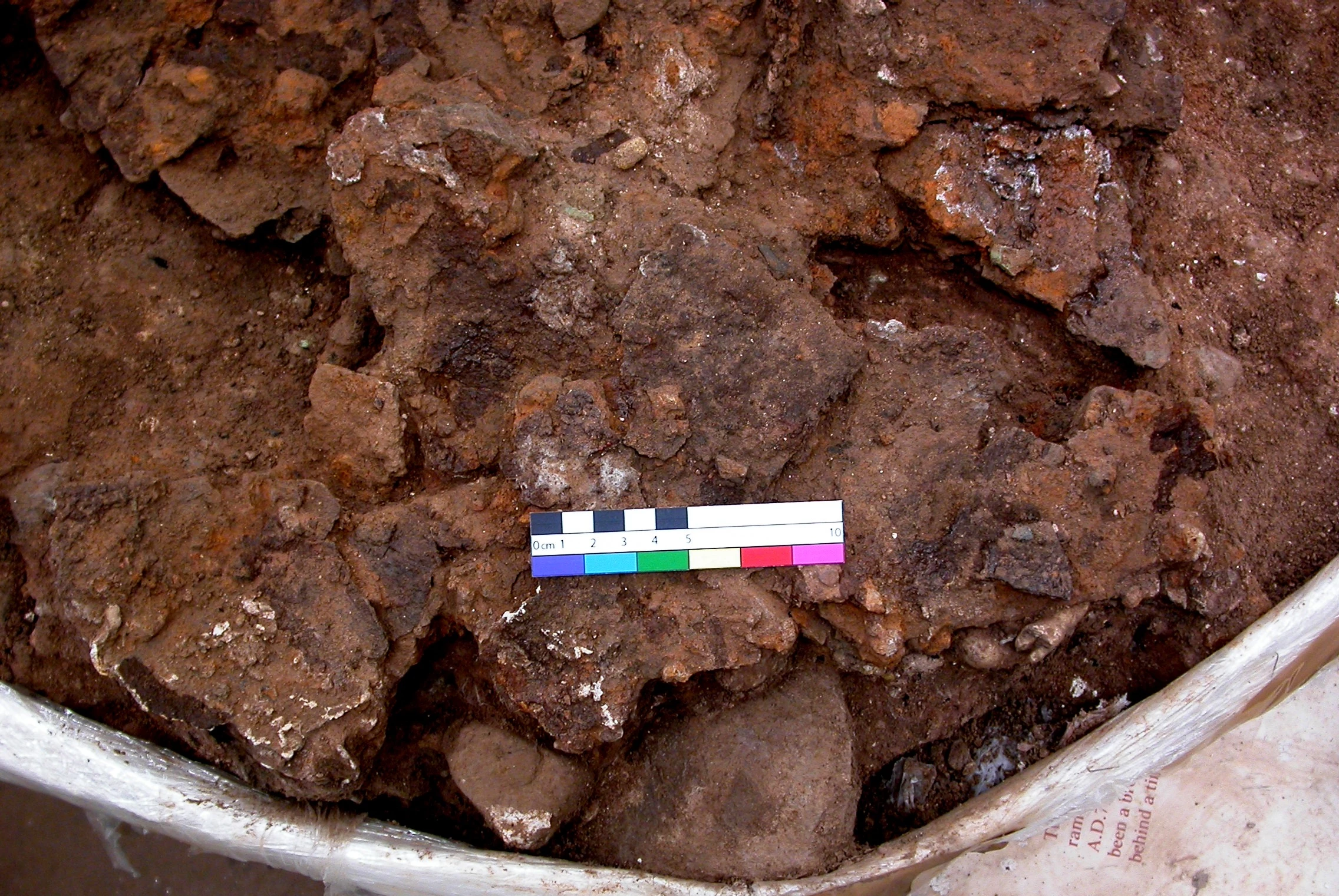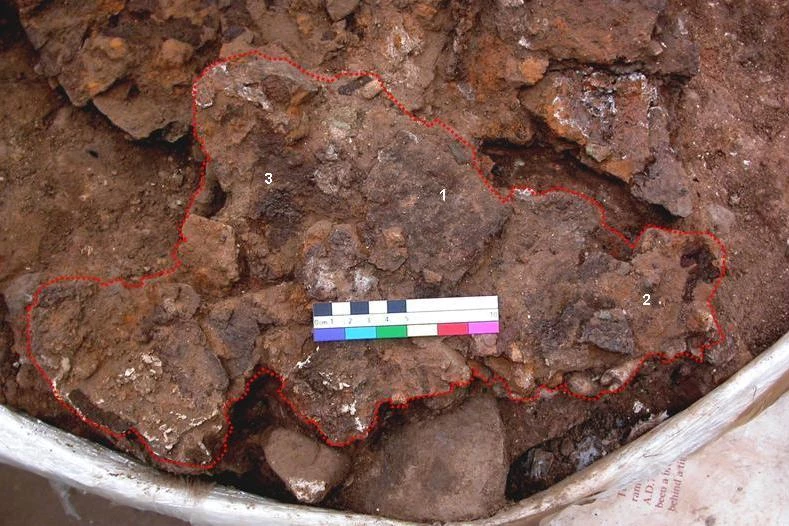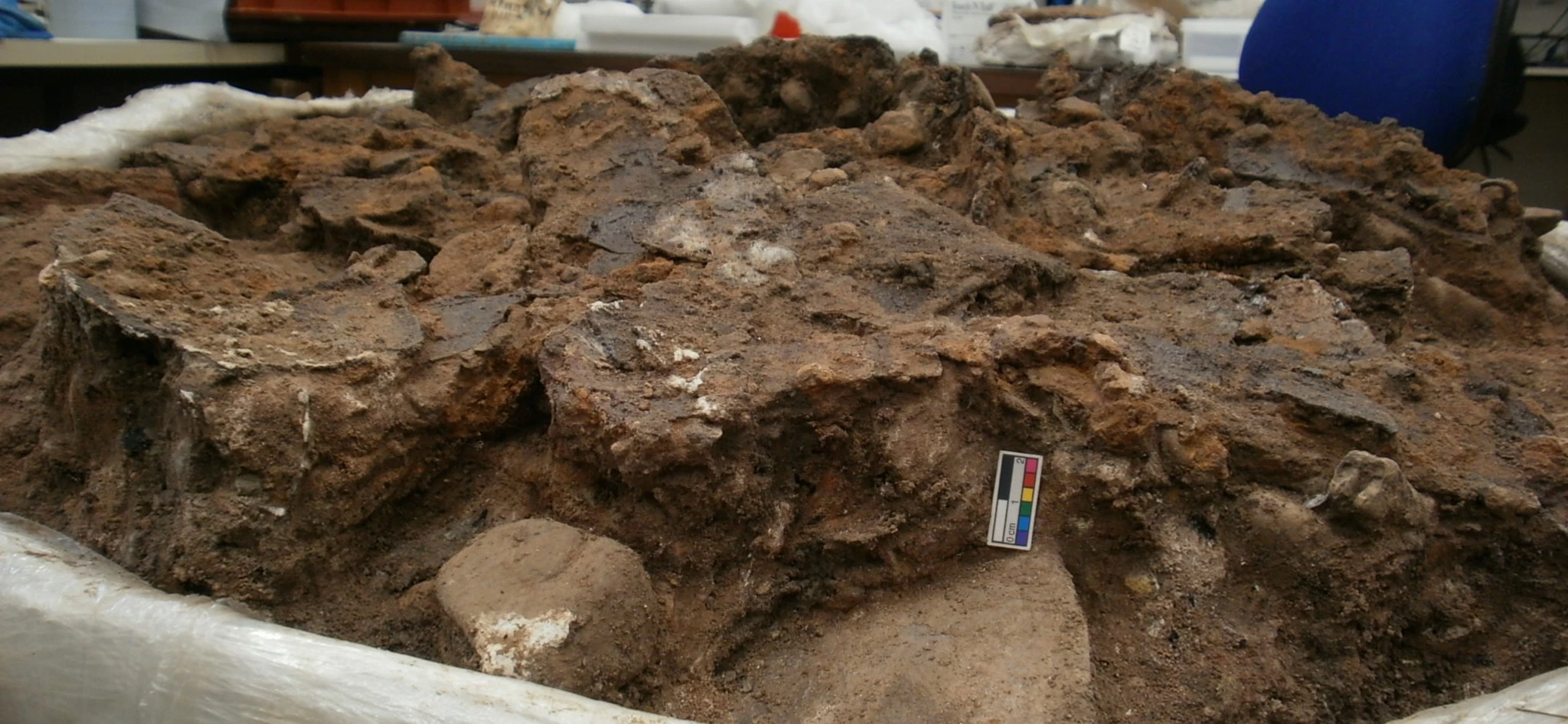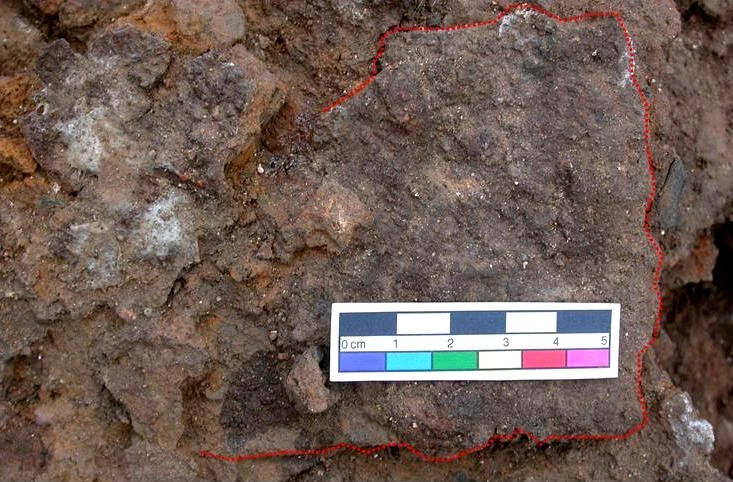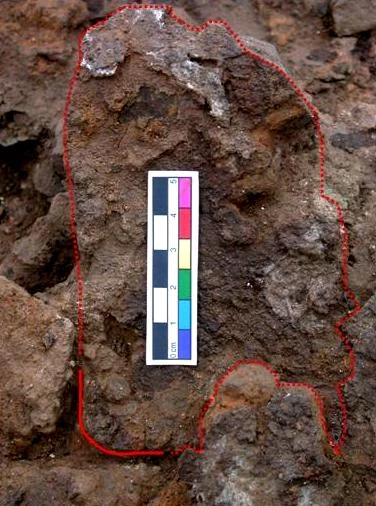Micro-excavation of Caerleon Armour: Overlapping Plates and Curved Corners
25 October 2011
This is a very short entry today, introducing feature ‘4’ of the block- a mass of overlapping plate. It has been difficult in this area to detect the edges of separate plates, and few diagnostic features have appeared. The first two photographs show the ‘feature’ overall (remember that the boundaries of this area are arbitrary constructions), and as in the previous post, I have included annotated and unannotated photographs.
The ‘profile’ of feature 4 can be made out in the third photograph. You can clearly see the burial deposit the lorica is resting on here- a real rubbish layer of soil, stones, bone and tile. This room was clearly neglected long before the dumping of the military items.
The fourth and fifth photographs show areas labelled as ‘1’ and ‘2’ on the overall annotated photograph. These plates are slightly more distinguishable than most in this cluster, and are recognizably plates of a lorica segmentata cuirass. These plates have straight edges, and in the case of plate ‘2’, two parallel edges, which can be measured (this plate is 7.5 cm in width) - these are important dimensions for curators, who can compare these measurements with those of lorica plates from other Roman sites, and work out where on the cuirass they might have come from.
Finally, one of the most interesting artefacts to come out of this feature is the plate shown in the sixth photograph, labelled as ‘3’ on the overall shot. It measures 7 cm in width and has a curved corner- this is great to find, as the corners of lorica plates were slightly rounded for comfort’s sake. Thus far, this is the only plate uncovered in this whole assemblage with this trait.
